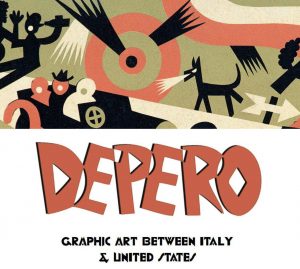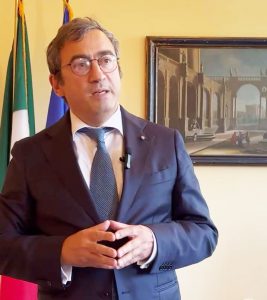by Nora Hamerman for Voce Italiana
The most innovative center of Italian—and indeed, European–painting in the first half of the 14th century was not Florence, Venice, or Rome. It was the prosperous city-state republic of Siena, situated on the pilgrimage route from Paris to Rome. The beauty and artistic ambition of the paintings created there is being celebrated in an exhibit at New York’s Metropolitan Museum of Art, “Siena: The Rise of Painting.”
The show, on view through Jan. 25, features just four artists: Duccio di Buoninsegna, Simone Martini, and the brothers Pietro and Ambrogio Lorenzetti.

Not only is this the first major exhibition of early Sienese art in America. It brings together pictures that have been separated for centuries, and offers background information about textiles, contemporary sculpture, and even the structure of the works themselves. (If you cannot go, enjoy the virtual tour at https://youtu.be/0DUietlAY0c?si=DUhO3giVT5omT6Fj .)
Even if one could travel to all the lending institutions (the cathedral museum and Pinacoteca Nazionale of Siena itself, or course, but also Boston, London, Berlin, Antwerp, Rome) one would not see them as they are shown in New York this month. You pass through dark galleries to see brightly illuminated panels of sacred history. (Kudos to the exhibition designer.)
Duccio (c. 1260-1318) is the founder of the school. In the first room we see how Duccio broke away from the Byzantine icon tradition, represented by a Madonna and Child by a Greek artist that is still in Siena. Duccio replaces the rigid format with the Christ Child tenderly reaching for his mother’s veil, and possibly wiping a tear from her eye.
Duccio’s most famous work is the “Maesta,” a massive two-sided altarpiece with the Madonna in Majesty on the front and the Crucifixion on the back. When it was completed in 1311, the altarpiece was paraded through the streets of Siena to the Cathedral in a great celebration. But it was later dismembered and many scenes were sold abroad. What remains in Siena is on view at the cathedral museum there; now in New York you can see seven scenes from the Life of Christ side by side, including panels now in museums in Madrid, New York, Fort Worth, Washington, and London.
Pietro Lorenzetti, one of two brothers who continued Duccio’s artistic legacy and died in the Black Death around 1348, is represented with a massive polyptych (altarpiece with many parts) for the original contract of 1320 survives. It remains in the church, called the Pieve, in Arezzo, which exceptionally loaned it for this exhibit. Here, one can walk around the back and read an explanation of the how the altarpiece was constructed.
By Ambrogio Lorenzetti , the exhibit offers a unique Annunciation, where the Virgin Mary wears a gold earring marking her as a Jewish maiden, and four panels from an altarpiece dedicated to St. Nicholas. One of the panels, “St Nicholas consecrated as a bishop,” anticipates the discovery of perspective a century later with its convincing portrayal of an interior space.
The last hero of the exhibit is Simone Martini. His portrayal of St. Joseph and the Virgin Mary confronting the adolescent Jesus after he stayed behind in Jerusalem to debate the rabbis in the temple, is a stunning example of how Sienese artists merged the divine with the human. Simone’s folding devotional work, the “Orsini Polyptych” of 1330-40. may be the greatest coup of the exhibit’s curators. The six surviving panels ended up in France at an early date and profoundly influenced the Northern Renaissance. Now split among Antwerp, Paris, and Berlin, they are reunited in New York for the first time in over two centuries.





